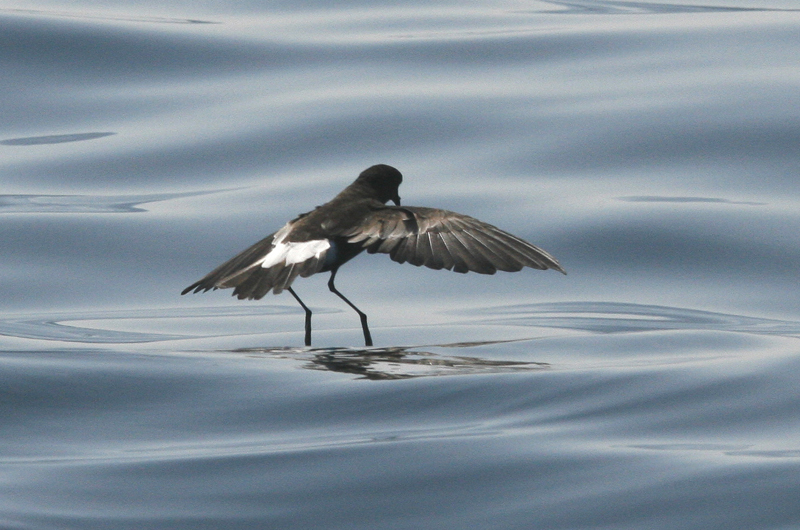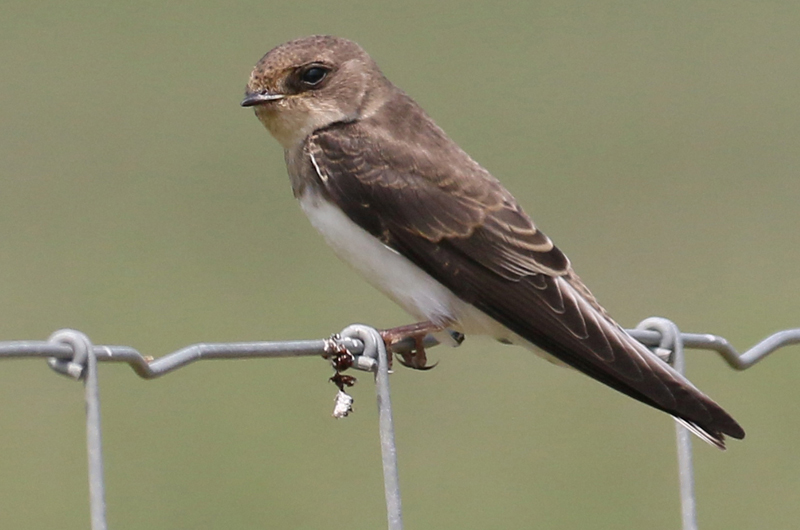Shorebirds are generally considered to be one of the more difficult species to identify. They are so difficult that there is a term — peeps — for the small sandpipers. And now they are even more difficult because the juveniles, hatched in June, are starting to show up on our beaches.
Until this week the shorebirds that we were seeing were all adults. They are in fairly drab, worn plumage because they molt and grow new feathers toward the end of their southward migration or after they arrive on their wintering grounds. Feather wear changes their bright breeding plumages into their drab winter plumage. The ends of the feathers that had their bright colors are literally being worn away, exposing the drab colors of the nearly one-year old feathers.
But now the juveniles are showing up. They hatched in June as downy chicks and grew many of their feathers in July. So the feathers are still brand new, complete with brighter colors, and the back and wing feathers usually have white edges, creating a patterned topside that may appear scaly. They may even have white stripes on their upper backs. Thus they look distinctly different from the adults with their drab worn feathers.
To correctly identify shorebirds we must first determine their ages. Are they drab adults or brightly colored juveniles? Skipping this step can easily lead to incorrect identifications.
On August 1 at Little Beach, I observed three juvenile ruddy turnstones. These juveniles show neither the adult’s gaudy black and white harlequin face pattern nor the russet of the back and wings. Their white feather edgings, however, do produce a scaly-backed appearance.
An adult and a juvenile least sandpiper were observed by Jessica Ancker and Guy and Susan Babineau at Red Beach on August 1. One of them appeared to be much larger than the other, especially in the photographs, but size is variable and can be altered by either fluffing up their feathers (aggression) or by compressing them against their body (submissive). Which option a bird chooses depends on many factors including the weather and the individual’s status and mood.
On August 7, Ken Magnuson observed three lesser yellowlegs at the Edgartown Golf Club. At least one of them was a juvenile based on the extensive spotting on its wings and back. He also spotted a solitary sandpiper there.
Nobody said it would be easy, but there will be lots more of the juveniles to practice identifying in the coming months.
Bird Sightings
Dahlia Rudavsky and Bob Jampol report that their recent kayak trips around Sengekontacket Pond have been productive, as they have found semipalmated plovers, ruddy turnstones, short-billed dowitchers, many small peeps, green herons, great egrets, oystercatchers, willets and osprey.
Debra Luce had a young Cooper’s hawk visit her yard on August 6.
Kenneth LaVigne had a red-eyed vireo visit his yard on August 5. Keep an ear out for this species, as some of them can still be heard singing in the woodlands.
On August 5, Tim Leland heard bobwhites calling at Wasque, the first ones he has heard there in seven years. He also reports that he has been hearing lots of whip-poor-wills. Speaking of bobwhites, Rick Karney spotted one perched on a signpost along the footpath to Moshup Beach in Aquinnah.
The threesome of Lanny McDowell, Pette Gilmore and Warren Woessner found short-billed dowitcher, willet, red knot, ruddy turnstone, lesser black-backed gull, common tern and green heron, all from Norton Point on August 4. They also observed four species of swallows along the fence lines of the Farm Institute: barn, tree, bank, and rough-winged.
On August 3, Al Sgroi, Steve Allen and the Felix Neck early birders group found a flock of 14 northern gannets fling over the landward edge of Sengekontacket Pond. To put it mildly, this is a very unusual location for these large seabirds.
Jeff Bernier found the juvenile yellow-crowned night-heron that has been frequenting Sheriff’s Meadow Sanctuary on August 2.
Harlan Kent was fishing about a mile and one half off Wasque when he observed a Wilson’s storm-petrel and several greater shearwaters. One of the shearwaters even landed briefly on his boat.
On July 30, Chris Daly reports that a female redstart was perching on a window at his Aquinnah home, giving him an up-close view for about 30 seconds, which seemed like a much longer view. He has also been seeing piping lovers at Philbin Beach, as well as oystercatchers at Quitsa Pond.
Sarah Mayhew has had so many bees visiting her hummingbird feeders that she had to put bee guards on them. This has the unintended effect of preventing the orioles in her yard from accessing the nectar in the feeder. One of the orioles unsuccessfully tried to use the hummingbird feeder for at least five minutes, all the while ignoring the nearby oriole feeder.
On August 6, I was at Cedar Tree Neck when I found a cliff swallow and a northern waterthrush. I was sitting on the bench at the overlook at the brown trail when the solitary cliff swallow flew overhead, dropped down to just above the Vineyard Sound and winged its way toward Naushon. Its pale buffy rump patch was clearly visible as it flew away. Later that day I was walking the white trail and observed a small vernal pool, which I scanned with my binoculars; the waterthrush was foraging on the forest floor near the edge of the water. These are the first of many migrating songbirds that will be passing through.
This is the season for southbound migrants; please keep us up-to-date by reporting your sightings to birds@mvgazette.com.
Robert Culbert leads Saturday morning Guided Birding Tours and is an ecological consultant living in Vineyard Haven.












Comments
Comment policy »